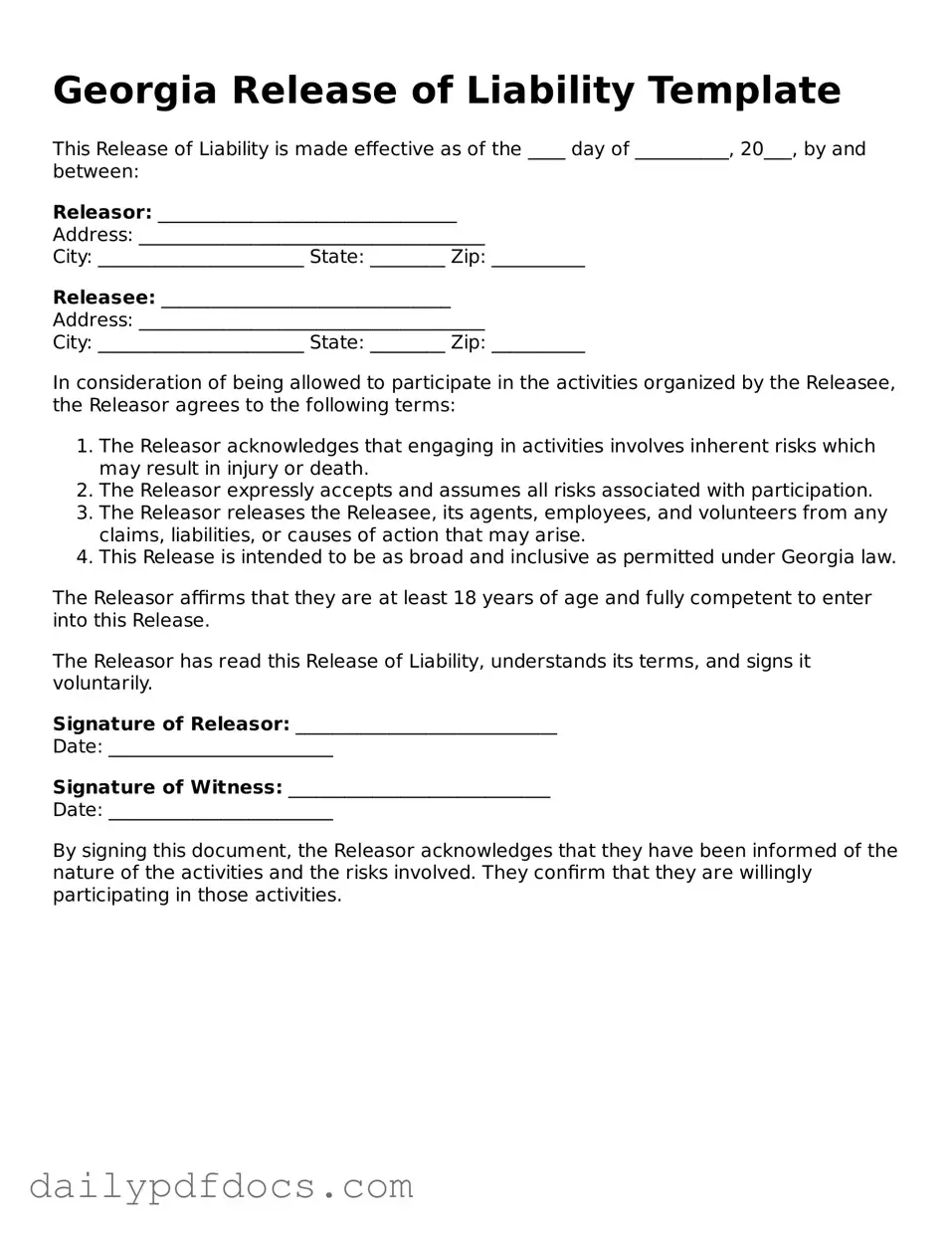What is a Georgia Release of Liability form?
A Georgia Release of Liability form is a legal document that protects an individual or organization from being held responsible for injuries or damages that may occur during a specific activity. This form is often used in recreational, sports, or event settings where risks are involved.
Why do I need a Release of Liability form?
This form is important because it helps to clarify the risks associated with an activity. By signing it, participants acknowledge these risks and agree not to hold the organization or individual liable for any injuries that may happen. This can provide peace of mind for both parties.
Who should sign the Release of Liability form?
Typically, anyone participating in the activity should sign the form. If the participant is a minor, a parent or guardian must sign on their behalf. This ensures that all parties understand the risks involved.
What information is included in the form?
The form generally includes details about the activity, a description of the risks, and a statement where the participant agrees to release the organizer from liability. Personal information, such as the participant’s name and contact details, is also included.
Is a Release of Liability form legally binding?
Yes, once signed, the form is legally binding, provided it meets certain requirements. It must be clear, unambiguous, and not violate any laws. However, courts may not enforce it if it is deemed overly broad or if there is evidence of gross negligence.
Can I still sue if I sign the Release of Liability form?
In most cases, signing the form limits your ability to sue for injuries related to the activity. However, you may still have grounds for a lawsuit if there is evidence of negligence or misconduct that goes beyond the risks outlined in the form.
How can I ensure the form is valid?
To ensure the form is valid, it should be clear and straightforward. It’s also wise to have it reviewed by a legal professional to confirm that it complies with state laws. Make sure all participants read and understand the form before signing.
What happens if I don’t sign the form?
If you choose not to sign the Release of Liability form, you may not be allowed to participate in the activity. The organization needs to protect itself from potential claims, and signing the form is often a requirement for participation.
Can the Release of Liability form be revoked?
Once signed, the form generally cannot be revoked. However, if circumstances change significantly or if the participant is misled about the risks, there may be grounds for challenging the agreement. Always consult a legal expert for guidance in such situations.
Where can I obtain a Georgia Release of Liability form?
You can often find a Georgia Release of Liability form online through various legal websites or from organizations that host activities. It’s important to ensure that the form you use is appropriate for your specific needs and complies with Georgia laws.
